Victor Villaseñor, Author & Founder of Snow Goose Global Thanksgiving
 Victor Villaseñor could barely read when he decided to fulfill his dream of being a writer. Today, he has written nine novels, and 65 stories; he also is now a slow, but enthusiastic reader.
Victor Villaseñor could barely read when he decided to fulfill his dream of being a writer. Today, he has written nine novels, and 65 stories; he also is now a slow, but enthusiastic reader.
by Liz Attebery
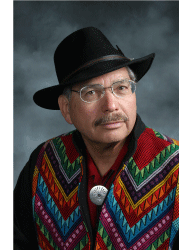 Quitting has never been an option for Victor Villaseñor. The celebrated Mexican-American author, whose writing has been compared to that of John Steinbeck and Gabriel Garcia Marquez, wrote nine novels and 65 stories and received 265 rejections before his first book was published in 1973. The book, Macho, is a novel about a young farm worker who leaves his home in Mexico to seek a better life picking fruit in California, where he can earn more in a week than he can in a year back home. The man endures backbreaking work, grueling conditions, and low wages, but, like the author, he never gives up.
Quitting has never been an option for Victor Villaseñor. The celebrated Mexican-American author, whose writing has been compared to that of John Steinbeck and Gabriel Garcia Marquez, wrote nine novels and 65 stories and received 265 rejections before his first book was published in 1973. The book, Macho, is a novel about a young farm worker who leaves his home in Mexico to seek a better life picking fruit in California, where he can earn more in a week than he can in a year back home. The man endures backbreaking work, grueling conditions, and low wages, but, like the author, he never gives up.
Villaseñor received rave reviews for Macho and went on to publish a number of non-fiction works, including Rain of Gold, based on his parents’ journey from Mexico during the Revolution to modern-day Carlsbad, California. He sold the publishing rights to the book for $75,000. But when the publisher insisted on billing the book as fiction, to boost sales, and changing the title from Rain of Gold, the English translation of his mother’s village in Mexico, to Rio Grande, he remortgaged his home and bought back the rights. “They wanted a “Mexican” title for a Mexican book, but Rio Grande is a John Wayne movie,” he said in a 1992 interview with People Magazine. The book also had to remain nonfiction, he said, “because I wanted my children to see examples of real Mexican heroes, since I grew up thinking Mexicans could only wash dishes and work in the fields.”
A small press specializing in Latino writers eventually published Rain of Gold, which became a national best-seller, has been translated into seven languages, and is used in schools and colleges throughout the United States. The author scored another success with Burro Genius, a memoir that took him 40 years to complete. The book, which was nominated for a Pulitzer Prize, brims with passion, imagination, and vivid images of Villaseñor’s contrasting experiences as a youth. Raised in a closely-knit family on a ranch in Oceanside, California, he enjoyed a carefree life until he started school and got his first taste of discrimination. Slapped on the head for speaking Spanish, which was all his family spoke at home, he endured a steady barrage of ethnic slurs, as teachers beat and humiliated him for being a “stupid Mexican,” and Anglo students made school a living hell for him because he struggled with reading and flunked third grade twice. It would be decades before Villaseñor learned that dyslexia, and not stupidity, made reading so difficult and school so unpleasant.
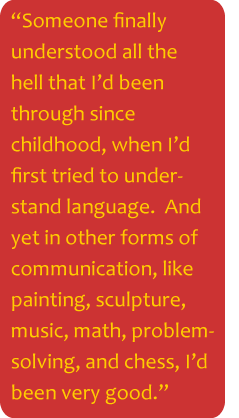 Inspired by the spiritual teachings of his Yaqui Indian grandmother, he found comfort amid the pain by drawing and coloring stars, for she had told him that humans “had come to this planeta as Walking Stars, just as Jesus had come to do Papito Dios’ will on this tierra firma.” He also learned from his father the importance of being “un hombre” and a “burro macho, which never quits or breaks down, no matter what.”
Inspired by the spiritual teachings of his Yaqui Indian grandmother, he found comfort amid the pain by drawing and coloring stars, for she had told him that humans “had come to this planeta as Walking Stars, just as Jesus had come to do Papito Dios’ will on this tierra firma.” He also learned from his father the importance of being “un hombre” and a “burro macho, which never quits or breaks down, no matter what.”
The one bright spot in his academic life was a substitute teacher in seventh grade who turned him on to the joys of writing by telling him to write about what he loved and not worry about grammar and spelling. He wrote a paper about his deceased brother’s dog, who he said ran away to intercept the brother’s soul and lead it to heaven.” Villaseñor, who was used to D’s and F’s and belittling comments from his regular teacher, got an A on the paper. “I’m a Mexican, so you can’t be giving me an A,” he told the substitute, who praised his work and refused to lower the grade.
But inspiring teachers were hard to find, and Villaseñor barely made it to 11th grade before dropping out of school. He traveled in Mexico and did a tour in the Army, all the while dreaming of becoming a great writer. The only problem was, he didn’t know how to read. With the support of a former high school teacher, he finally learned. By circling every word he didn’t know on a page, printing each one nine times, and learning five new words a day, he was able to build a memorized vocabulary. He later crammed his truck with manuscripts he had written and drove to UCLA, where the late Ronald Kayser, then a professor of creative writing, recognized his talents and helped him gain admission to the classes he wanted to take. Kayser became Villaseñor’s mentor and lifelong friend.
Villaseñor, who writes very slowly and constantly rewrites, is also a slow but enthusiastic reader, who sees the world in patterns and has difficulty seeing letters. It took more than four decades to learn that his difficulties” as well as his talents” at least partially stemmed from something with a name. At age 44, he was diagnosed with dyslexia. Out of a possible 20 points on a test for the disability, he scored “off the charts,” according to the test administrator, who said it was amazing that he could read at all. As Villaseñor said in his memoir, “someone finally understood all the hell that I’d been through since childhood, when I’d first tried to understand language. And yet in other forms of communication, like painting, sculpture, music, math, problem-solving, and chess, I’d been very good.”
But he felt compelled to conquer written communication. Villaseñor explained in an appearance on the American Latino Television program “Heroes” that he had to become a writer to dispel the “anger and hate because of teachers making Mexican students speak English only, and the abuse of us Mexican kids, and all the unfairness of life. By writing about it, it would release me, get it out of me. I had a vision that I was going crazy, and the only way to solve it was to write my family’s story, so we could have a story of ourselves,” he said.
Villaseñor today is a sought-after speaker, as well as a prolific author. In lectures to educational and community groups throughout the country, he describes dyslexia as a gift and encourages teachers to “bring out the genius in themselves and their students.” Having been delegated to the slow-learning group in school because of his language difficulties and then-undiagnosed dyslexia, he supports giving all students an education appropriate to their intelligence and potential, instead of automatically placing them on the non-college track because of their ethnicity or native language.
Related
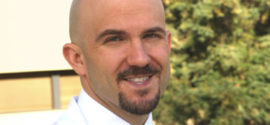
Blake Charlton, M.D., Author & Cardiologist Fellow at the University of California, S..
Blake Charlton would appear to have it all. A summa cum laude graduate of Yale University, a graduate of Stanford Medical School, and a published author, whose debut novel, Spellwright, was released to glowing reviews from the science fiction community and the publishing industry at large. The novel was the first of a nearly finished trilogy published by Tor Books. Set in a world where words can be physically peeled off a page and used to cast spells, Spellwright relates the misadventures of a wizard named Nicodemus Weal, who has a gift for producing magical language, but a disability that makes any text he touches misspell, with devastating consequences.
Read More
Max Brooks, New York Times Best-Selling Author
Max Brooks, the #1 New York Times bestselling author of The Zombie Survival Guide (Three Rivers Press) and World War Z: An Oral History of the Zombie War (Crown) knows a little something about this. Yet he would argue that his years spent at the Center for Early Education in Hollywood as a young boy with dyslexia left him riddled with anxiety and self-doubt that shadows him to this day. “It was a slog,” he says simply.
Read More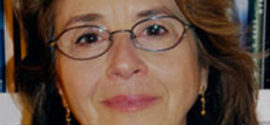
Jeanne Betancourt, Children’s Book Author & Screenwriter
Jeanne Betancourt is the author of 75 novels for children and young adults; more than a dozen film and television scripts; and an adult nonfiction book. She is a recipient of the American Psychological Association’s National Psychological Award for Excellence in the Media and several Children’s Choice Awards. Betancourt also received six Emmy Award nominations for her After-School Specials, written for ABC Television and featuring teens dealing with critical social issues.
Read More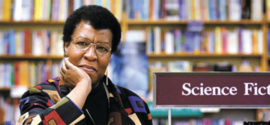
Octavia Butler, Award-Winning Author
Octavia Butler was an award-winning author of thirteen books. She was a pioneer in the science fiction genre, winning both the Nebula and the Hugo Awards. In 1995, Butler was honored with a MacArthur fellowship, and in 2005, she was the recipient of the City College of New York’s Langston Hughes Medal. The Pen Center West awarded her with a lifetime achievement award. She died after a fall outside of her home in 2006.
Read More